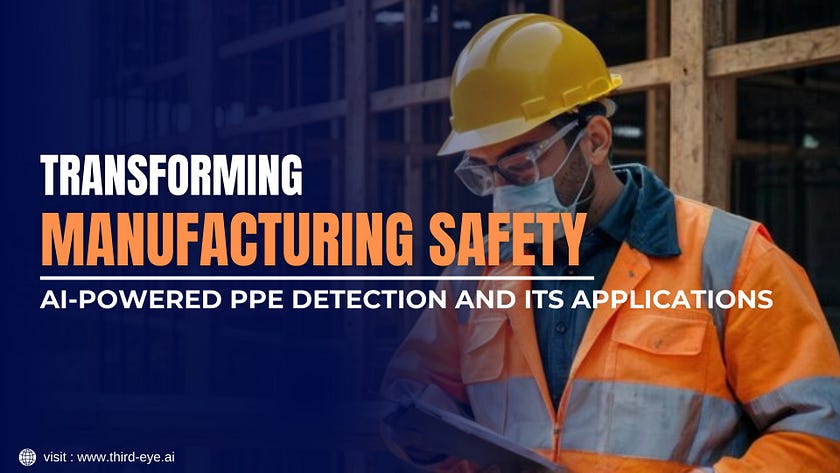
In today’s fast-paced manufacturing world, ensuring the safety of workers is crucial. Traditional methods of monitoring Personal Protective Equipment (PPE) can be challenging and prone to human error. However, AI-powered PPE detection is changing the game. By using advanced artificial intelligence and computer vision technology, this system automates the process of checking PPE compliance, making it easier and more effective to maintain safety standards. Here’s a detailed look at how AI-powered PPE detection is enhancing safety in manufacturing.
What is AI-powered PPE Detection?
- Automated Monitoring: AI-powered PPE detection systems use artificial intelligence to monitor workers and ensure they are wearing the necessary safety gear, such as helmets, gloves, and safety goggles. This technology is integrated with CCTV cameras to analyze video footage in real time.
- Instant Alerts: If a worker is not wearing the correct PPE, the system can send immediate alerts to supervisors, allowing for quick action to prevent potential accidents.
How It Enhances Safety
- Real-Time Compliance Checking: Unlike manual methods, AI systems continuously check if workers are wearing the right PPE throughout their shifts. This constant monitoring helps catch compliance issues immediately.
- Context-Aware Decisions: AI systems don’t just check if PPE is worn — they also consider the context. For example, if a worker is operating heavy machinery, the system ensures they are equipped with the proper protective gear for that specific task.
Advanced Technology Behind AI-Powered PPE Detection
- Deep Learning Algorithms: The core technology of AI-powered PPE detection involves deep learning algorithms, particularly Convolutional Neural Networks (CNNs). These algorithms are trained to recognize different types of PPE in various conditions, ensuring accurate detection.
- Adaptability: The system can be customized for different manufacturing environments using transfer learning techniques, making it versatile for various industrial settings.
Integrating Predictive Analytics and IoT
- Predictive Analytics: By combining AI with predictive analytics, manufacturers can anticipate potential safety risks before they become critical. For instance, if the system detects environmental hazards, it can check if workers are wearing the appropriate PPE.
- IoT Sensors: IoT sensors embedded in PPE or the work environment collect real-time data on factors like air quality and temperature. The AI system analyzes this data to assess and predict safety risks.
The Future of AI-Driven Safety
- Autonomous Safety Systems: The future may see fully autonomous safety systems that use AI, IoT, and robotics to create a comprehensive safety network. Imagine drones patrolling factory floors to monitor PPE compliance and check for machinery faults.
- Integrated Safety Solutions: Combining AI with other technologies will lead to more proactive and integrated safety solutions, making workplaces safer and more efficient.
Conclusion
AI-powered PPE detection is revolutionizing safety in the manufacturing industry. Automating PPE monitoring and integrating advanced technologies provide a more accurate and efficient way to maintain safety standards. As technology continues to advance, manufacturers can expect even greater improvements in workplace safety, protecting their workforce and enhancing overall operational efficiency.
Comments